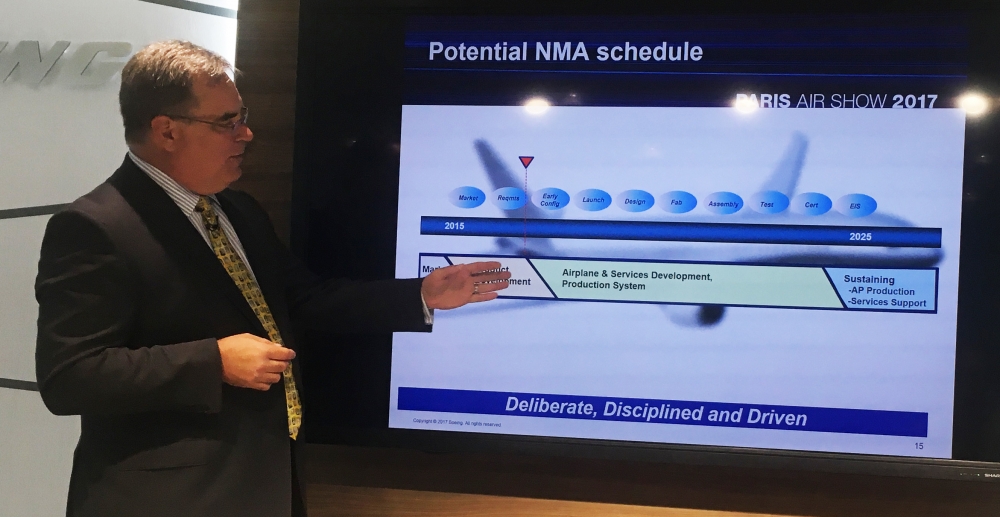Boeing is planning to build what will be a revolutionary new aircraft that will make it economically viable to literally connect hundreds of new non-stop routes between smaller cities.
At last week’s Paris Air Show, Boeing’s VP and general manager of airplane development, Mike Delaney gave a tantalizing glimpse of what air travel will become by late 2024.
The new aircraft that could be called the Boeing 797 but is now known at Boeing as the New Midsize Airplane will come in two models and seat between 220 and 270 passengers. It will fit between the single-aisle 180-230 seat Boeing 737 and the much larger and ultra-long range 250-350 seat 787.
What started out as a replacement for the Boeing 757, which seats between 239 and 280 and flies 4000nm (7300km), has evolved into an aircraft with far greater capability and appeal.
Making the twin-engine 797 so special is the fact it is designed from the outset to serve medium-haul routes of up to 9,300kms and will cut fuel costs by 25 to 30 percent compared to the 787- itself the world leader in fuel economy.
Boeing says that there are 30,000 city pairs that are not connected and could be served economically with the 797.
In a twist, the 797 will be almost identical in size to two planes -the 7J7 and DC-11 – that were touted by Boeing and its legacy company McDonnell Douglas in the 80s and 90s.
In both cases, neither could close the business case because the market was not ready and in the case of McDonnell Douglas management balked at the investment. But that has all changed.
The challenge for airlines today is that Boeing offers the 180-230 seat 737 that can only fly economically for about six hours while the next smallest plane in the Boeing range is the 787 which been designed for much longer distances and thus carries a great deal of extra structural weight.
There is a similar – although smaller – gap in the Airbus range of planes.
The 797 will fit neatly in between and give airlines great opportunities to open new routes.
For the passenger, the 797 will be a giant step forward in comfort with a 2-3-2 configuration in economy, 1-2-2 in premium economy and 1-1-1 in business class.
The plane will be an all composite construction and feature a new generation of engine that promises unparalleled fuel economy and quietness. Boeing is well advanced in closing the business case and has discussed the aircraft with 57 airlines and the reaction has been enthusiastic.
Mr Delaney said that Boeing hopes to launch the plane late next year with first flight and certification in 2024 with delivery to airlines early in 2025. The 797 will have oval-shaped fuselage and be something like a 767 above the floor and a 737 below.
The company is willing to compromise on cargo space to reduce the profile, and thus drag, of the aircraft.
It reasons correctly that cargo is not as big of a consideration on the largely secondary routes it will operate.
And Mr Delaney said “Boeing already knows what the production system will look and the assembly sequence and is already building parts for the aircraft in the computer.”
“We are trying to build the first few hundred in the computer – that’s the power of the digital world.”
This is all key to working out the exact cost to build and then closing the business case. And the chances of a go-ahead?
“I am very optimistic that we will close the business case,” said Mr Delaney.
























